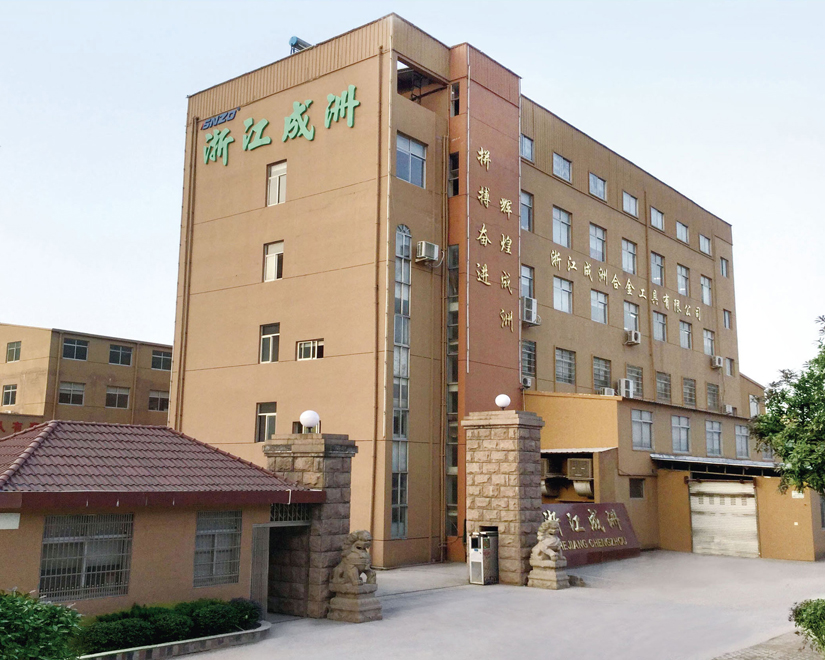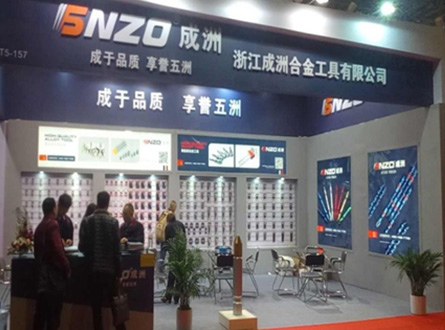
In 2019, the industrial Internet will exert its power from three "CM"
- 24-Jan-Fri
- Views:412
Chinese and German industrial Internet has its own characteristics
At present, the networked information space and the realistic physical space can jointly form a collaborative space, and the future manufacturing industry will also enter the era of collaborative manufacturing with virtual and real interaction through the industrial Internet. In terms of industrial Internet, the United States promotes enterprises as the main body, GE and Cisco, IBM and other industrial Internet alliance to promote a new round of industrial upgrading in the United States, focusing on the factory Internet of things, intelligent equipment, intelligent data and intelligent decision-making four key areas. That is to say, the digital acquisition CNC (PLC data acquisition and digital control such as CNC machine tools) in the traditional automation era will develop to predictive decision-making (predictive maintenance and intelligent decision-making based on big data).
The Industry 4.0 promoted by Germany is also essentially Internet + advanced manufacturing, mainly based on industry organizations, leading German industry giants to promote a new round of industrial upgrading in Germany, with the main purpose of building smart factories and intelligent manufacturing.
China mainly takes the government as the main body, and promotes the deep integration of the real economy and the digital economy through the in-depth implementation of the industrial Internet innovation and development strategy, and realizes the transformation of old and new driving forces, which not only drives the transformation and upgrading of traditional industries, but also develops the new economy and new forms of business. Compared with the industrial Internet in the United States and Industry 4.0 in Germany, China's industrial Internet system is more comprehensive - not only factory interconnection or smart factories, but also from the core technology to the industrial ecology, from the underlying network to the application platform, from traceability to network security, covering the whole process of the industry.
Industrial Internet development advantages and challenges
There is no doubt that the Internet has entered the second half of the competition, with "algorithms, computing power and data" as the growth engine, and the target group is no longer consumers, but enterprises in all walks of life. With the "Internet of everything" becoming possible, the Internet has also shifted from the "consumer Internet" to the larger and deeper industrial Internet. In May 2018, Tencent Cloud officially released an industrial Internet platform based on big data applications to promote the digital and intelligent development of manufacturing and help the digital upgrading of traditional manufacturing. On August 1, Alibaba Cloud released the ET Industrial Brain Open platform, based on which partners can easily achieve industrial data collection, analysis and modeling, and quickly build intelligent applications; In September, Tencent again announced a strategic upgrade, hoping to embrace the industrial Internet and become a "digital assistant" in all walks of life.
The advantages of China's large-scale promotion of industrial Internet lie in two aspects. On the one hand, the enthusiasm of enterprises is strong, and the listing of Foxconn Industrial Internet Company has greatly encouraged the industry; On the other hand, there are national policies to vigorously support and promote, giving the industry great confidence. However, the industry generally believes that the development of the industrial Internet still faces many challenges, and the difficulties are concentrated in four aspects: standardization, complex system management, robust communication infrastructure construction and network security.
First, standardization. In order to network various goods and services inside and outside the factory, many contents such as communication methods and data formats need to be standardized. Today, in the international standardization stage, the United States, Germany, Japan and other developed countries can maintain a dominant position for a long time, because of the strong comprehensive strength of the manufacturing industry, and China is still playing the role of "audience" on the international standardization stage, reflecting the overall level of China's manufacturing industry and foreign gaps. China's manufacturing industry has been relatively weak in product design and production process control, lack of standardization, and lack of international standardization thinking.
Second, complex system management. After the actual production process is coordinated with various business management system networks, the system as a whole is more complicated, and it will be more difficult to manage it.
Third, the construction of robust communication infrastructure. It mainly refers to the construction of communication infrastructure with high reliability that is suitable for industry. Of course, in this regard, China Telecom Xinjiang Company has a lot of layout. In early June, China Telecom launched the unveiling of the industrial Internet base in Xinjiang.
Fourth, network security. In the industrial Internet era, after the factory and the outside world are networked, the risk of malware intrusion and network attacks will be further enhanced, and the demand for network security countermeasures and solutions will be more vigorous.
The latest progress of industrial Internet
In general, the industrial Internet can be considered to be divided into four major parts - network, identity, platform, and security. In November, the Ministry of Industry and Information Technology released the "List of Industrial Internet Pilot Demonstration Projects in 2018", and 72 projects from four aspects of industrial Internet network, logo analysis, platform, and security were listed. Among them, the platform is the core, is regarded as the "industrial operating system", the industrial Internet platform has become a hot investment, many major manufacturing enterprises are competing to launch the industrial Internet platform, seize the future industrial Internet opportunities. The 40 platform integrated innovation application pilot demonstration projects involve 15 listed companies, including Dongfang Guosen, Jidong Cement, Neusoft Group, Angang Steel, Huayu Automobile, Hongdou Shares, Zhongtian Technology, Qingdao Haier, Inspur Software, Citic Heavy Industry, Sany Heavy Industry, Baiyun Electric, Midea Group, Industrial Fulian, TbeA Electric.
In the process of the development and growth of the industrial Internet, veteran enterprises in various industries are the absolute protagonists. The launch of their respective industrial Internet platforms is only the first step, and the next step is to see how these companies can exert their respective expertise and create their own new industrial ecology in the industrial Internet. Here, I am more optimistic about Industrial Fulian (full name Foxconn Industrial Internet Co., LTD.).
First, the industrial rich union itself has the demand for "industrial interconnection". Factories are located in Shenzhen, Kunshan, Taiyuan, Zhengzhou, Chengdu, Chongqing and Guiyang, etc., and through the industrial Internet platform, network collaborative manufacturing is realized. Resource information sharing and resource integration between factories through the value chain and information network can ensure seamless cooperation between factories and form a mechanism to provide real-time products and services. The value of the industrial Internet is also mainly reflected in the spatial span, from the integration of factories to the integration between factories, to the integration of the industrial Internet industry chain between factories, enterprise groups and even multinational groups, will produce new value chains and business model innovation.
Second, Industrial Fulian has a long-term basis for intelligent manufacturing exploration. Foxconn's degree of automation is at a high level. To a certain extent, Foxconn has combined various production resources, including production equipment, factory workers, business management systems and production facilities, into a closed-loop network, and then through the Internet of Things and system service applications, to achieve horizontal and vertical links and end-to-end digital integration across the entire value chain network of intelligent products and systems, thereby improving production efficiency. Realize the smart factory. Through the horizontal connection of the smart factory manufacturing system on the distributed value network, it is possible to adjust production scheduling flexibly and in real time according to the latest situation, with the help of software and network monitoring and communication during product development, production, sales, logistics, and service, rather than completely following the plan of months or years ago. In this regard, Foxconn has made many attempts and has the basis for the realization of the industrial Internet.
Future development should start from three CM's
Of course, there is a national policy, and there is also a direction for the future of the industry. This will be followed by large-scale policy support in the coming years. However, the direction of technology research, especially in the theoretical innovation and industrial research of the industrial Internet, I personally feel that it is not enough. The author believes that the industry and enterprises to develop the industrial Internet should start from three CM.
CM (Concurrent Manufacturing) refers to the fact that all manufacturing processes are parallel, transparent, and flat to achieve intelligent manufacturing in the true sense. The parallel intelligent manufacturing process will break through the constraints of the limited resources in the physical world by utilizing the massive data and information resources in the network world. In this way, we can design and develop, purchase raw material parts, organize production and manufacturing, and carry out marketing, thereby reducing operating costs, improving production efficiency, shortening product production cycle, and reducing energy use.
CM (Cloud Manufacturing) is simply a new manufacturing model and new means based on ubiquitous network to realize interconnection, service and personalization, integrating offline resources (parts, production workshops, production equipment, capital and workers, etc.) online. Attract different enterprises from upstream and downstream of the value chain to participate in the design, production, service and other links to realize the sharing and complementary of various resources.
C2M (Customer-to-Manufactory) is a business model centered on consumers. It is a "pull" supply chain system by providing its own standardized modules for consumers to combine selectively. With the industrial Internet platform, C2M can form a leading ability for the global industry chain. Then the rapid production of multi-variety customization is realized through intelligent manufacturing.
In 2019, the industry is facing a trend of fragmentation
At present, the industrial Internet has no mature architecture and large-scale scene support, even Germany's Siemens, the United States GE and other companies are still only in the architecture and trial stage. In fact, the current development of industrial rich union does face some difficulties, which is also a microcosm of the development of the global industrial Internet platform, reflecting the difficulty of building an industrial Internet platform.
The road to transformation and upgrading is not so simple, the industrial Internet is just a tool, how to implement it in the future? What new problems will the industrial Internet encounter? All this remains to be seen.
First of all, the trend of industry segmentation will become more and more obvious in 2019. Previously, Sany Heavy Industry, Xugong and other industry leaders have launched an industry-level industrial Internet big data platform, collecting big data in their respective fields, and the industrial Internet platform facing the vertical field will be the first to break through and be recognized by users. Second, industrial apps will grow. With a platform, ecology will naturally emerge. For example, Apple provides many apps download based on iOS platform and many apps based on Google Android platform through App Store.
In the future, with the maturity of the industrial Internet platform architecture and the further opening of the API interface, industrial apps will also develop rapidly. The industrial software of the traditional architecture is embedded software and non-embedded software, mainly stand-alone software and most of them are confined to the factory, while the industrial APP is the industrial application software based on the industrial Internet platform of the new architecture. Compared with the original relatively "solidified" industrial software, industrial apps will break the system structure, give birth to new formats and ecology, and provide new business models and services.
- related news
-

Warm congratulations, Zhejiang Chengzhou Alloy Tools Co., Ltd. website is fully online!
Warm congratulations, Zhejiang Chengzhou Alloy Tools Co., Ltd. website is fully online!
-

Supplier of large diameter stainless steel, iron-nickel based corrosion resistant alloy pipe blanks
In 2009, the company passed ISO9001-2008 quality management system certification, with perfect quality control system, is Zhejiang Huzhou Yongxing Special Stainless Steel Co., LTD., Zhejiang Jiuli Group Co., LTD. Qualified supplier, is the only supplier of large diameter stainless steel, iron nickel based corrosion resistant alloy pipe blank, and passed the pressure vessel and Norway Marine pipe blank certification. As a member of China Forging Association Shanghai Forging Association, the company has more than 200 domestic and foreign users. The company has always adhered to the "quality of survival, quality of development, quality to benefit" quality policy, dedicated to our customers.
-

Always active in all kinds of hardware tools exhibitions at home and abroad
Always active in all kinds of hardware tools exhibitions at home and abroad
-

Marine large caliber stainless steel pipe billet supplier certification
On June 4, Huzhou Yongxing Special Steel and the Norwegian Classification Society five people, according to the Norwegian classification Society factory certification requirements, the company's human resources composition, equipment assurance ability, process conditions confirmation, product inspection and other management system elements were audited, the audit team believes that: Quality management system runs effectively, agreed to be Huzhou Yongxing Special Steel Marine large caliber stainless steel pipe billet qualified supplier.
-

Domestic industrial robot dilemma: absence of core components
The lack of core components is the dilemma and key of domestic industrial robots, which makes China's industrial robots carry a heavy burden from birth and are in a dilemma.In China, industrial robots have a large application market, as early as 2014, Wang Ruixiang, then president of the China Machinery Industry Federation, said that China has become the world's largest industrial robot market.However, according to China's industrial robot market share in 2017, the current domestic robot market is still Japan Fanuc, Yaskawa, Germany Kuka, Sweden abb "four families" firmly controlled in the hands, domestic robots only 32.8% of the market share. And most of these competitions are still concentrated in the low-end areas, high-end areas of domestic industrial robots, even less than 5% of the market share. It can be seen that compared with international counterparts, domestic robot enterprises in the domestic and international market share is not high, the technical level is still a large gap, the entire country's robot technology and industry status quo, is not optimistic.Why are domestic robots in such an awkward situation?Many robot manufacturers react, the main problem of domestic robots is that the core components can only be imported, the cost can not be reduced, and it is difficult to form mass production, even if the robot is successfully sold, the important components are from imports, only a small number of enterprises have the ability to achieve independent research and development of a certain type of component, resulting in the need to sell more expensive than foreign products. Create a vicious circle in the market.The lack of core components is the dilemma and key of domestic industrial robots, which makes China's industrial robots carry a heavy burden from birth and are in a dilemma.In general, industrial robots have three main parts, which are reducer, controller and servo system. In most robot products, these three accounts for more than half of the total cost of robots. Robot industry research expert Luo Baihui has analyzed that taking a common domestic 50 kg industrial robot as an example, the cost of the reducer, servo motor, and servo drive accounted for 35%, 14%, and 13% respectively.If you think of the robot as a person, the controller is the spine and brain of the robot. A controller with a serial or parallel structure, with a flexible programmable system, used to control a robot or assist a human in completing a task. In comparison, the gap between domestic and foreign countries in this area is the smallest, because the technical difficulty is not large, so some of the more mature robot companies in China are able to independently develop.The reducer is more like the joint of the robot's hands, feet and even the whole body. As the most basic mechanical part, it helps the robot to carry out turnover and call as a whole. The robot reducer is mainly divided into rv reducer and harmonic reducer. At present, 70% of the world's precision reducer market is occupied by Japan's Hamanaco and Nabotsk, especially in China. And foreign brands with good quality high-quality reducer, often spend 2 to 3 times the price in order to purchase. Fortunately, the domestic reducer in the past two years is also vigorously developed, especially competitive. For example, in 2017, the domestic reducer market demand of about 300,000 units, the domestic reducer accounted for about 20% of the market, the demand for foreign reducer also dropped from nearly 85% in 2016 to less than 80%. I believe that in the near future, these two figures will be closer.Practitioners generally believe that the survival environment of domestic robot core components is the most difficult, and the biggest technological gap is the servo motor system. Servo motor is the execution unit of robot and the main factor affecting the performance of robot. The European and American servo overload capability led by Siemens, Rockwell, etc., is strong, and the dynamic performance is good, while the Japanese brands led by Yaskawa Panasonic, etc., account for the small size and the price is cheap; As for the country, although some domestic manufacturers seem to be able to produce servo motors, but the reliability can not meet the requirements, the failure rate is too high, few robot manufacturers dare to use. In China's servo market, Japanese products with more advanced technology and performance occupy nearly 60% of the Chinese market with good cost performance, followed by Europe, the United States and Taiwan, accounting for 20% and 10%, respectively, while the domestic servo motor market share, from 2015 to 2017, only less than 20% of the share.The most important instrument of the state must not be given to others. Let these core components to achieve localization, high-end, increase research and development investment, improve core technical capabilities, etc., is to open up the two arteries of domestic robot problems, crack the key factors of the rise of national robot brands, but also the domestic robot more than 100 difficulties, the only way to rise. Only in this way, domestic industrial robots can reduce manufacturing costs, maintain better stability and brand reputation, and fully improve our market competition rate at home and in the world.

 Chinese
Chinese